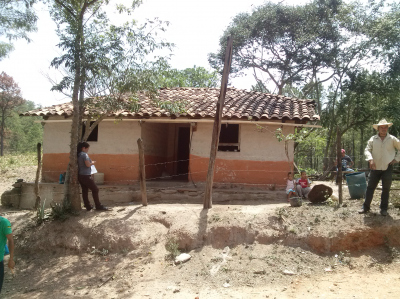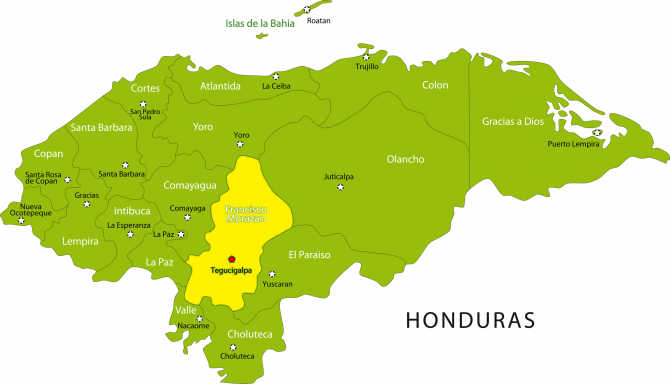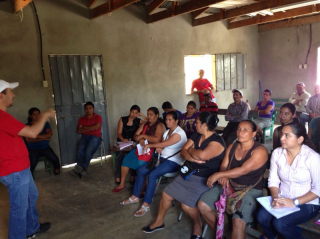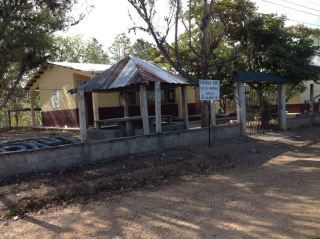Casillas, Honduras
![]()
![]()
![]()
![]()
![]()
![]()
![]() Click on Programs to learn more about their work in this community
Click on Programs to learn more about their work in this community
General Information
| Population* | ~300
 |
| Number of homes | 70 |
| Avg # of people per home | 4 |
| Primary Occupations | Agriculture; Municipality |
| Water System | None |
| Community Bank | None |
| % of Homes with Latrines | N/A |
| Electricity | Yes |
| Corresponding Health Center & Distance | CESAMO in Talanga; about 3-4 hours walking distance |
| Common Illnesses | Respiratory illnesses, gastrointestinal illnesses |
| School Access and Distance | 1st-6th grade in community (30 min walking distance) and secondary school in Talanga |
| Municipality | Talanga |
| Department | Francisco Morazán |
| Distance from compounds | 2 hours and 30 minutes |
* Population does not reflect how many patients will be seen on medical
brigades as many people from surrounding communities come seeking
Medical Brigades medical attention.
Top Needs Expressed
The top three needs expressed by the community were access to potable water, increased access to doctor, and latrines.
Casillas is located in the municipality of Talanga, department of Francisco Morazan in Honduras.

A primary school in the community serves 54 children, grades 1 - 6. The school is highly regarded by the community and surrounding areas for the quality of education the children receive. One teacher serves all six grades and teaches the students simultaneously. Subjects taught in the school include Math, Spanish, Social Science, Natural Science, Art and Physical Education. Education is extremely important to the people of Casillas. Being from the community, the teacher is particularly enthusiastic about giving her students the best education possible. She has a university degree and continues to take classes on the weekend to further her education. Parents of the students also play an active role in the education of their children. 30 mothers who are part of the Parent's Council help organize school events, cook lunches, and make funding requests to the community's municipality. A parent of the community teaches a kindergarden class.
Almost all students who attend school graduate 6th grade. About 60% of the students in any given graduation class continue on to secondary school, which is a 45-minute bicycle ride from the community. About 1-2 students then attend high school, and some even continue on to higher education. Some community members tune in to a radio program called “Maestra en Casa” that aims to provide secondary and high school level education through audio learning.
On November 2015 Casillas and Global Brigades Water program were happy to announce the completion of the water system. The community along with Global Brigades technicians and volunteers constructed a gravity based system. The project was also completed in partnership with the Mayor of Casillas. To learn more about the completed projected, click here.
Water Issues Prior to Completion of Water System
The water system in Casillas consisted of a stream for washing clothes and dishes. For bathing purposes, water from the stream was carried in buckets back to homes for private use. The stream is a 30-40 minute walk from most homes. The water in the stream was not suitable for drinking since it was not purified or regulated. During the dry season, the stream dries and community members must travel to nearby communities for water.
Drinking water in Casillas was obtained through a covered pump well approximately 15 minutes from the entrance to the main stream.The well was designed and built 20 years ago by the community and 86/20, a non-profit organization. Women collected drinking water in 5 gallon jugs every 2 days. These jugs were at times carried for an hour through mountainous terrains back to their homes. The water pump often ran dry by 9 AM.
The pump system was only 3 meters deep which left it susceptible to pollution by runoff; therefore, bacteria and parasites persisted frequently in the drinking water. The residents were aware that the depth of the pump was not suitable, but due to lack of access to other sources the pump was still used.
Casillas has a water council that consists of 7 members. The council is authorized to collect money from the community when repairs are needed for maintainance. When repairs were needed, the Water Council consulted the Global Brigades' trained plumber. The council's goal was to work with the local municipality to plan and build an entirely new water system which they achieve with the aid of Global Brigades.
Casillas currently does not have its own health center. There are community health workers present (not trained by GB) and they see patients once a month for check-ups.
The most common health issues include diarrhea, intestinal and respiratory issues, colds, and occasionally diabetes. If medication is not readily available, the CHWs must travel to the clinic in Talanga for more medical supplies. The government used to send doctors and/or nurses to the community every month for health check-ups, but lack of funds has discontinued these routine visits. Aside from medical treatment, the CHWs educate the community on basic sanitation techniques such as the proper disposal of waste.
Most of the houses have dirt floors and open stoves, leading to foot infections and respiratory issues. Only about 18% of the homes have concrete floors. Water sanitation is not a common practice within the community. The method advertised by the health center for water sanitation is to put tanks of water on the roof and let the sun boil the water over the course of the day. The effectiveness of this process has not been tested. Chlorine is available in the community store, but not frequently purchased; therefore, many gastrointestinal issues result from consumption of unpurified water. Most houses also do not have latrines.
The closest main health center to the community is in Talanga. Typical visits include pregnancy check-ups and deliveries. The clinices personnel also travels to Casillas every three months to give birth control shots.
Agriculture, cultivating corn and beans, is the main source of income. The income in the community is not fixed as it is dependant on agriculture yield and its weather patterns.
The community currently does not have a community bank or microenterprise, but Global Brigade Microfinance program plans to train community bank member this coming year, 2016.
Casillas is excited to continue to work with Global Brigades. They look forward to the completion of the Public Health projects and the start of their community bank. Community leaders have shown to be organized and supportive of their community initiatives.

